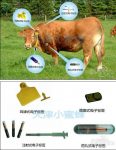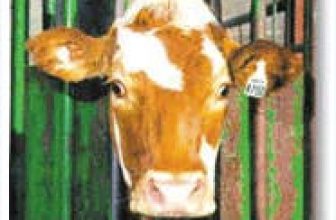
Application of RFID in animal identification and tracking
[ad_1]
In recent years, animal epidemics around the world have continued to erupt, such as mad cow disease, foot-and-mouth disease, avian influenza, etc., which have brought serious harm to people’s health and lives, and severely hit the world’s animal husbandry industry, which has caused special events in countries around the world. It is highly valued by European countries. To this end, governments of various countries quickly formulate policies and adopt various measures to strengthen the management of animals, among which the identification and tracking of animals has become one of these major measures. For example, the British government stipulates that all kinds of tracking and identification methods must be adopted for breeding animals such as cattle, pigs, sheep, goats, and horses. The practice of animal electronic identification in recent years has shown that RFID in electronic identification methods is playing an increasingly important role in animal management.
1. Animal identification and tracking
Animal identification and tracking refers to a technology that uses specific tags to correspond to the animal to be identified by a certain technical means, and can track and manage the relevant attributes of the animal at any time.
The identification and tracking of various animals can strengthen the control and supervision of foreign animal diseases, protect the safety of local species, and ensure the safety of international trade of livestock products; it can strengthen the government’s animal vaccination and disease prevention management, and improve the animal Disease diagnosis and reporting capabilities, and emergency response to animal epidemics at home and abroad.
2. Links involved in RFID
Feeding link: When the animals are born and raised, RFID tags (such as ear tags or foot rings) are installed on the animals. These electronic tags are hit on the ears when the animals are born. After that, the breeder uses a handheld device , Constantly set, collect or store the information in the process of its growth, and control the production safety from the source. At the same time, the records of epidemic prevention records, disease information and key information of the breeding process of livestock in various periods are recorded. Before the slaughter of livestock, the RFID tag must be read by the handheld to confirm that the disease-free livestock can be released.
Slaughter link: Before slaughter, read the RFID tag information on the animal to confirm that the animal has an epidemic prevention record and is truly healthy before it can be slaughtered and enter the market. At the same time, write this information into the box label, cargo pallet label and price Go among the labels.
Supervision by the competent authority: In the process of market supervision, the supervisory authority requires that the pallets, packaging boxes and price tags of all sales outlets contain RFID electronic tags to correlate the origin, product name, type, grade, and price of the meat. The data is written into the electronic label.
Logistics distribution link: Fresh meat enters the circulation link, and RFID electronic tags are attached to the pallets or packing boxes loaded with the meat and transported to the designated supermarket or market point of sale. When the goods are delivered, they only need to pass a fixed remote reading Card reader or hand-held reader can read the RFID electronic tag on the packing box or pallet.
Management of foreign livestock: If the meat products that have been slaughtered from other provinces and cities enter the market, they must first go to the designated supervision location for product inspection, and after the inspection is passed, the electronic label of the relevant product information and related inspection information shall be affixed. At the same time, the regulatory authority issued a qualification certificate for market sales products.
3. Types and methods of use of RFID animal tags
Animal RFID tags are roughly divided into collar type, ear tag type, injection type and pill type electronic tags, as shown in the figure.

(1) The collar type electronic tag can be easily changed from one animal to another. It is mainly used in automatic feed rationing in stables and measuring milk production.
(2) The performance of the ear tag type electronic tag is much better than that of the bar code ear tag. Because electronic tags store much more data than barcodes, and they can be used in harsh environments with oil and rain. The reading distance of the reader is far greater than the reading distance of the barcode, and it can realize batch reading.
(3) Injectable electronic tags have only been used in recent years. The principle is to use a special tool to place the electronic tags under the skin of the animal. Therefore, a fixed connection is established between the animal’s body and the electronic tag. This connection can only be revoked by surgery. At present, commercially available injectable electronic tags are only the size of a grain of rice.
(4) The pill-type electronic tag is to place an electronic tag in an acid-resistant cylindrical container, mostly ceramic. Then put this container through the animal’s esophagus into the foregastric juice of the ruminant. Under normal circumstances, the pill-type electronic tag will stay in the animal’s stomach for life. The biggest feature of this method is simple and reliable, and the electronic tag can be placed in the animal without harming the animal.
4. System structure diagram

5. Basic functions of the system
1. Basic animal information: records of basic information such as birth information, breeder information, growth information, entering and leaving the pasture, and slaughter information;
2. Epidemic prevention information: records of information such as epidemic prevention, vaccination, epidemic prevention inspection, and epidemic prevention treatment;
3. Supervision of circulation links: records of information such as temperature, humidity, and crossing inspections;
4. Slaughter and quarantine records: slaughter and quarantine, slaughter date, storage environment and other information records;
5. Sales product information: record of sales place information, sales date, distributor information;
6. The statistical query function of the national supervision department;
7. System background management function;
8. Traceability query function;
[ad_2]





